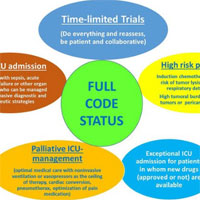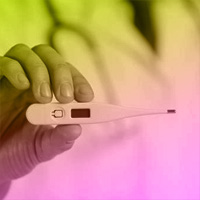
Direct Oral Anticoagulant- or Warfarin-Related Major Bleeding
Direct oral anticoagulants (DOACs) have expanded the armamentarium for antithrombotic therapy. Although DOAC-related major bleeding was associated with favorable outcomes compared with warfarin in clinical trials, warfarin... read more

Role of Preventability in Redefining Failure to Rescue Among Major Trauma Patients
Failure to rescue (FTR) is defined as death after a major complication and has been adopted as a measure of quality in surgical patients. Current definitions of FTR are limited because they do not account for the influence... read more

The Intensive Care Medicine Research Agenda on Critically Ill Oncology and Hematology Patients
Over the coming years, accelerating progress against cancer will be associated with an increased number of patients who require life‑sustaining therapies for infectious or toxic chemotherapy‑related events. Major changes... read more

Reducing Brain Injury After Cardiac Arrest
Therapeutic hypothermia (TH) (32-34°C for 24 hours) should be mandatory practice for patients who are comatose after being resuscitated from out-of-hospital cardiac arrest, if the initial cardiac rhythm is either pulseless... read more
Virtual Hospital Monitors Patients at Eight Facilities
In a bunker-like former bank office near Tacoma' Hilltop neighborhood, 200 nurses, physicians and other health care staff spend their days treating scores of hospital patients they never meet using webcams, two-way speakers... read more

Psychological Burnout and the Intensive Care Practitioner
This review hopes to be practical and candid. Ultimately, whether burnout is present or not, these efforts can support a greater goal: to increase resilience, to aid retention, and to improve career guidance. Doctors are... read more

How to Beat Burnout
Burnout takes a toll on physicians, their patients, and their practices. Short visits, complicated patients, lack of control, electronic health record stress, and poor work-home balance can lead to physicians leaving practices... read more

Contact Precautions for Endemic MRSA and VRE
Physical barriers have been used to prevent infectious diseases dating back to leather gloves and coats used during the Black Death in medieval Europe. In the United States, isolation of persons with infections coincided... read more

Targeted Temperature Management and Neurologic Outcome After Out-of-Hospital Cardiac Arrest
In this randomized clinical trial enrolling 355 adults with out-of-hospital cardiac arrest, there was no significant difference in favorable neurologic outcome at 6 months for those treated for 48 hours (69%) vs 24 hours... read more

Effects of Polymyxin B Hemoperfusion on Mortality in Patients With Severe Sepsis and Septic Shock
Several studies have reported a survival benefit for polymyxin B hemoperfusion treatment in patients with severe sepsis and septic shock. However, recently, a propensity-matched analysis and a randomized controlled trial... read more
Developing an ICU Diary in the Pediatric ICU
Todd Fraser, MD, speaks with Jenny Tcharmtchi, BSN, RN, CCRN, about the article, "Family Experience in the PICU," published in Critical Connections, the Society of Critical Care Medicine's newsletter. Ms. Tcharmtchi... read more

Enhancing the Usability of Systematic Reviews by Improving the Consideration and Description of Interventions
The importance of adequate intervention descriptions in minimizing research waste and improving research usability and reproducibility has gained attention in the past few years. Nearly all focus to date has been on intervention... read more

Guidelines for the Provision and Assessment of Nutrition Support Therapy in the Pediatric Critically Ill Patient
This document represents the first collaboration between two organizations, American Society of Parenteral and Enteral Nutrition and the Society of Critical Care Medicine, to describe best practices in nutrition therapy in... read more

Critical Care Reviews Book 2017 (Free eBook)
The 2017 Critical Care Reviews Book seeks to summarize, critique and put in context the best critical care trials of 2016. Five intensivsts working in Northern Ireland have spent the past year writing this edition. This is... read more
Web-based ICU Communication Improves Patient Experience and Outcomes
Researchers at Brigham and Women's Hospital (BWH) have developed a web-based program that uses team communication and engagement to improve patient experience and outcomes. The study enrolled 1,075 ICU patients and provided... read more
Why are doctors plagued by depression and suicide?
Suicide among medical students and doctors has been a largely unacknowledged phenomenon for decades, obscured by secrecy and shame. Now, it’s beginning to emerge from the shadows. More than 62,000 people, many of them medical... read more

A part of patient care that I was not taught in medical school
How physicians express condolences. Recently, I’ve been thinking about how physicians express condolences. This weekend, I attended calling hours to visit with the family of a recently deceased patient. As I drove back... read more









